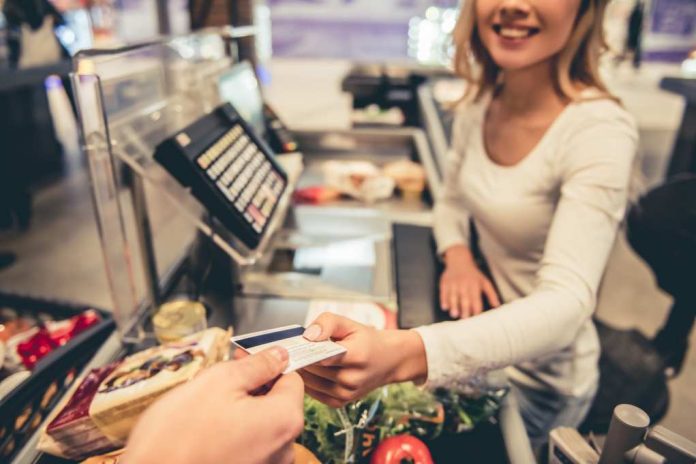
Life is full of unexpected twists and turns. While some can be great like winning the lottery, others can be worse like dealing with a natural disaster. There are a variety of different natural disasters that people may deal with in their lives like hurricanes, tsunamis, and more. The government understands that when disaster strikes, people may need more assistance during a time that’s especially full of hardship. That is why they created the Disaster Supplemental Nutrition Assistance Program (D-SNAP).
What is D-SNAP?
People that have gone through a disaster can find themselves in need of some extra support. That is why the government has D-SNAP. D-SNAP is a program that can give food assistance to qualifying households with food loss or damage that were a result of a natural disaster. In order for a state to provide this assistance opportunity to their residents, the state must receive an Individual Assistance declaration from the president. Once a state receives this declaration then they will need to request to operate this program from the United States Department of Agriculture (USDA). The USDA will need to provide approval for the states to operate D-SNAP.
If the state is approved to provide D-SNAP benefits, then it will work similarly to the Supplemental Nutrition Assistance Program (SNAP). This means there will still be an Electronic Benefit Transfer (EBT) card that individuals can use at stores that accept them as a form of payment on allowed food items.
What are D-SNAP Program Requirements?
Due to the fact that D-SNAP is meant to help those dealing with a disaster, the program requirements will be a little bit different compared to other program requirements. You may be able to receive D-SNAP benefits if you are dealing with one of the following disaster-related expenses:
- Home repairs
- Business repairs
- Temporary shelter expenses
- Evacuation expenses
- Relocation expenses
- Personal injury expenses
- Lost income due to the disaster or no access to income (which includes terminated, delayed, or reduced receipt of income, for a large part of the benefit period.)
- Food loss after a disaster like a power outage or flooding (in some cases)
It’s also important to note that if you are already receiving SNAP benefits, you can ask for a supplement when your state begins operating D-SNAP. If you are able to receive the supplement then it will increase your benefits up to the maximum amount allowed for your household size. However, for the supplement you must meet the following conditions:
- You are currently receiving less than the monthly maximum in benefits
- You are dealing with expenses and losses due to a disaster
As an existing SNAP recipient you may also be able to ask for replacement benefits for any qualifying food items lost in the disaster that were bought with SNAP funds. For any questions you have and to review information about SNAP and D-SNAP, you will want to get in touch with your local office.
How to Apply for D-SNAP?
If you are dealing with hardship due to a disaster, then you may benefit from applying for D-SNAP benefits. Typically, state agencies will provide information to the public through press and local media before the program begins. The information they provide should be able to help you learn the specifics of how to apply, eligibility qualifications, days of operation and more for your local area. Another way to review is through checking out the SNAP state directory.
Other Assistance Opportunities
Besides D-SNAP, there may be other programs that can help you if you are dealing with a disaster like:
Disaster Assistance and Emergency Relief Program for Individuals and Businesses
If you had to deal with a federally declared disaster then you may be able to get extra time to file and pay the taxes that you owe with this assistance opportunity. You can review specific information online by visiting Internal Revenue Service (IRS) News From Around the Nation. You would click on your state to see a list of returns and payments that are eligible for an extension as well as view other tax-related benefits.
Typically, if you want to qualify for this program you would need to:
- Live in a county that the IRS identified as eligible for disaster tax relief
- Make sure your address is up to date with the IRS
The best part about this assistance opportunity is that your account is automatically coded for filing and payment relief as long as the conditions above are met. However, if you have any questions you should get in touch with the IRS disaster hotline. You can reach them with a call at 1-866-562-5227.
Disaster Unemployment Assistance
People that have lost their employment or had their employment interrupted due to a natural disaster may be able to benefit from this assistance opportunity. This program provides temporary benefits to qualifying individuals. In order to be eligible to receive benefits from this option you will need to meet the following conditions:
- Have your job interrupted or lost as a result of a presidentially declared disaster
- Not be able to qualify for the standard unemployment insurance benefits
Another important part of eligibility to mention is that if you lived, worked, or were scheduled to work in a qualifying area, then you could be eligible to receive benefits if you:
- No longer have a job
- No longer have a place to work
- Cannot get to your job site
- Cannot perform work duties due to damage to the job site
- Were about to begin a new job that no longer exists due to the disaster
- Cannot work due to an injury cause by the disaster
- Had to become the major support for the household if head of household died due to the disaster
Recipients of this program must be able to work unless they can’t due to an injury that was caused by the disaster or they are taking steps to return to self-employment. If you want to file a claim you will need to wait for your state to publish information about availability. You will want to get in touch with your state’s unemployment agency as soon as possible. In some states, you will only be able to file over the phone or online.
Bottom Line
If you are dealing with a disaster, you can feel alone. However, there may be more support than you realize that can help. One great assistance opportunity is D-SNAP which is a food assistance program that can help qualifying individuals dealing with disaster. However, there are other programs that may be able to help during a disaster too like Disaster Assistance and Emergency Relief Program for Individuals and Businesses and Disaster Unemployment Assistance.
















